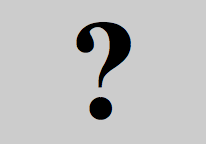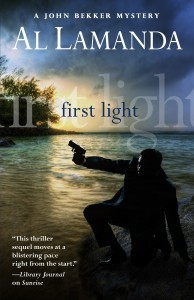Rambling Musings on the Mistakes I’ve Made Along the Way to Being Published.
![AL 100_1347[1] copy](https://i.gr-assets.com/images/S/compressed.photo.goodreads.com/hostedimages/1386967855i/7495458.jpg) Al Lamanda: You’ve sweated, stressed over, lost sleep because of, skipped meals, stood up friends and family, wrote, rewrote, gave up on, went back to, drank a bathtub amount of coffee over, and finally finished the book you started out to write.
Al Lamanda: You’ve sweated, stressed over, lost sleep because of, skipped meals, stood up friends and family, wrote, rewrote, gave up on, went back to, drank a bathtub amount of coffee over, and finally finished the book you started out to write.
And then you went back and did it all over again.
Finally, it’s finished. Your book. Now what?
You can consider it a labor of love and put it in a bottom desk drawer as so many unpublished authors I know have done because they’re afraid to let anyone read it, or …
You can pursue your dream of getting your masterpiece published, which by the way is the only real reason to write a book in the first place because bottom desk drawers can’t read.
When I first started writing, there weren’t the choices there are today. My choices were traditional publishers and that was it. Today, if you so choose, you can self-publish on a dozen different eBook publishing sites.
Before you try the eBook route, you want to take your best shot at getting you book scooped up by an agent, who will then in turn sell it for the best deal possible to a publisher.
Where do you start?
Why, at the beginning, of course, because very little has changed in the world of traditional publishing. Your best chance of selling your work to a publisher is to get an agent who believes in you, and that isn’t easy. In fact, it’s very difficult. Not as difficult as say performing a root canal on yourself, but it’s up there.
So, with that in mind, here are some of the things I did wrong and what I did to correct them along the way.
First, assuming you’ve finished your book, you must write a perfect query letter to an agent. One page  or less, preferably less. An agent may receive hundreds of query letters in a week, how much time do you think will be spent on your six page rambler? My first query letter was almost seven pages. I included everything but my height and weight and what my favorite breakfast foods are in it, and guess how many responses I got in return? Here’s a hint. It begins with goose and ends with egg.
or less, preferably less. An agent may receive hundreds of query letters in a week, how much time do you think will be spent on your six page rambler? My first query letter was almost seven pages. I included everything but my height and weight and what my favorite breakfast foods are in it, and guess how many responses I got in return? Here’s a hint. It begins with goose and ends with egg.
So what’s in a perfect query letter? Who you are, what your book is about, your contact information and a short bio of your work, if you have one. You can find many good examples of query letters on the sites I will list below. Note that they are all one page or less. Practice yours until it’s the best query letter you can make it. Remember your query letter is your face, your introduction and your first impression. Make it a great one.
Now you have a query letter, so what do you do with it? Send it to an agent, of course. I mean, how could they not love it? After all, it’s your book you’re talking about. Right? So what I did was send my query to about five hundred agents. I figured volume query lettering would have to work if you send out enough of them. Of course, that proved to be the exact wrong thing to do.
Here’s why. If you do your homework, you’ll find that most agents represent the type of books they are interested in reading. So why query an agent looking for women’s fiction and tell them about you great mystery/thriller for men? Why query an agent looking for action/suspense with you great new western or romance novel? Do you homework and find the agents interested in your genre and query them. If you check the websites I’ve listed below, you can locate the agents interested in your genre. Those are the ones to target.
So you written the perfect query and sent them to your targeted agents and yikes, an agent wants to read your work. What now?
 Simple, you do what the agent asks. Some will want to see a synopsis and first three chapters. Others will want a synopsis and the entire manuscript. Most, if not all will request a synopsis. The first time an agent asked me for a synopsis, I sent one nearly the size of my book. I never heard back. A synopsis should be two to six pages and no more. An agent doesn’t have the time to read a twenty page outline. If you had to read twenty or thirty of them a day, would you? Check the websites I’ve listed below for samples of some good synopsis writing. Practice writing yours and make sure it’s the best it can be before sending it out.
Simple, you do what the agent asks. Some will want to see a synopsis and first three chapters. Others will want a synopsis and the entire manuscript. Most, if not all will request a synopsis. The first time an agent asked me for a synopsis, I sent one nearly the size of my book. I never heard back. A synopsis should be two to six pages and no more. An agent doesn’t have the time to read a twenty page outline. If you had to read twenty or thirty of them a day, would you? Check the websites I’ve listed below for samples of some good synopsis writing. Practice writing yours and make sure it’s the best it can be before sending it out.
You’ve gotten this far, but you’re not there yet. When the agent asks to see your manuscript, what is expected is a manuscript formatted to industry standards. Nothing fancy in the least. Just 12 font, double spaced and as mistake free as possible. They don’t expect perfect, but they do expect industry standards and good. If the book is sold, a professional editor will take it from there. Check the websites below for samples of industry standards.
After that, it’s a waiting game. Don’t bug the agent. Normal response time is three months to get back to you, some as much as six months. After all, yours is not the only manuscript they have on their desk.
One final note on a doozy of a mistake I made early on. I took rejection personally. It isn’t.
Resist the temptation to let that agent know what you think of their rejection notice. Rejection is just  part of the business. Every reader won’t love your book and neither will every agent. Keep in mind that the agent who rejected your first book just might love your second one, but they will never read it if you make them an enemy.
part of the business. Every reader won’t love your book and neither will every agent. Keep in mind that the agent who rejected your first book just might love your second one, but they will never read it if you make them an enemy.
Remember, when it comes to agents, it only takes one. If you don’t make the mistakes I did and your book is good enough, you will find that one.
Thanks for letting me share some of my mistakes with you and I hope they help you along your way.
Lea Wait's Blog
- Lea Wait's profile
- 507 followers



